Random Noise Attenuation
![]()
![]()
Random Noise Attenuation is very important in Seismic Processing Imaging. g-Platform’s RNA module attenuates or reduces the incoherent noise from the seismic data that is not linearly predictable. It can be applied on shot domain gathers, CDP gathers or stacked data. Random Noise Attenuation improves the coherency of the Shot/CDP gathers or Stack image. It will be very helpful in velocity picking and other seismic processing procedures.
Coherent events repeated within the user defined windows however the incoherent(random) noise may behave the same and it will be in like spiky channels, background noise burst etc.
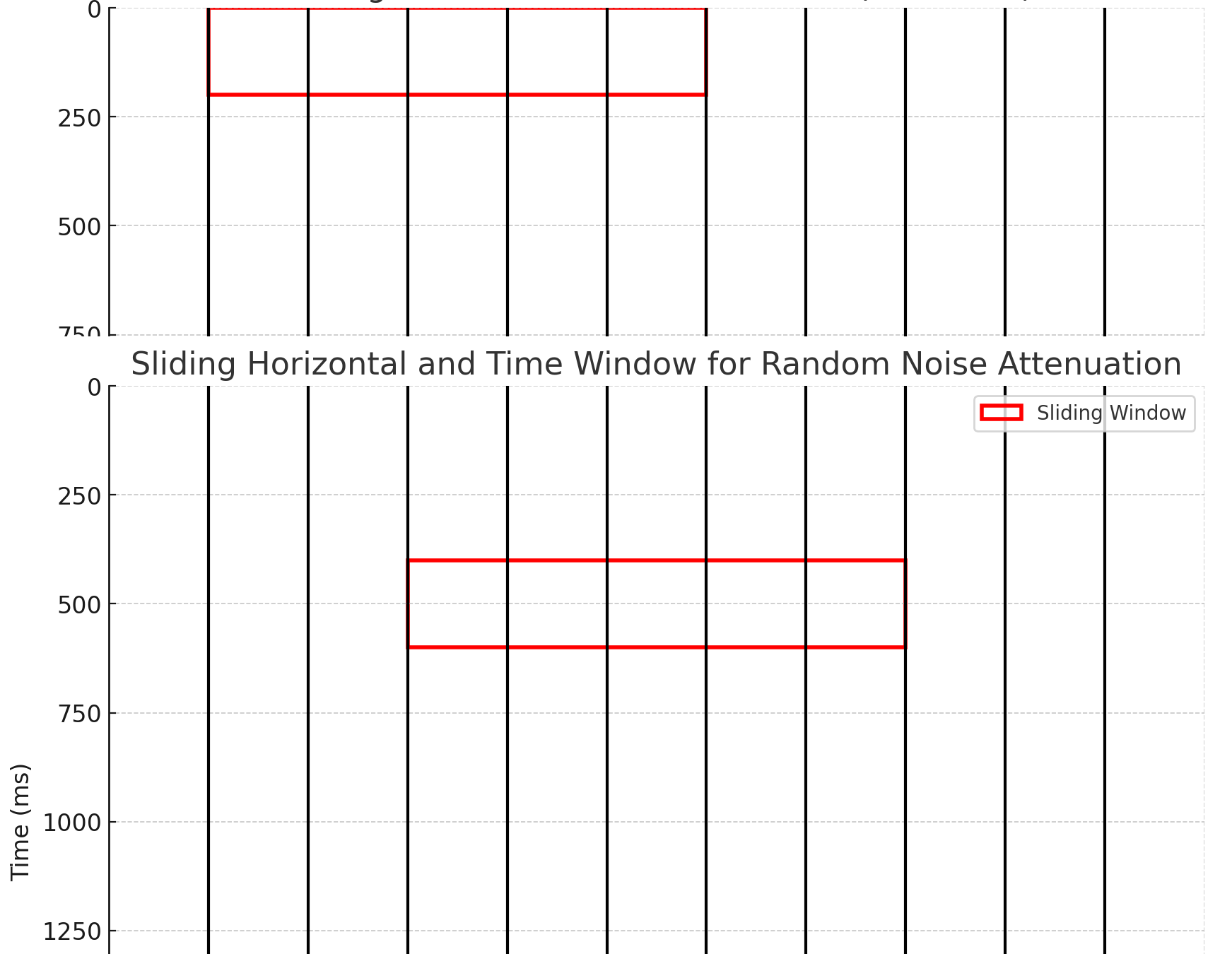
Based on the user defined horizontal sliding window (traces) and time window (samples), it divides the data into smaller chunks with the inputs of horizontal and time windows. Analyzes the data within the window and look for stronger events and compares it with noise. There are many methods like singular value decomposition (SVD), median filtering, curvelet transform, FX deconvolution filtering methods are used to attenuate the random (incoherent) noise.
![]()
![]()
Input DataItem
Input gather - input gather can be any gather like common shot/receiver/mid point. Also, it can be applied on post stack gather. Connect/reference to Output gather vista item.
![]()
![]()
Horizontal sliding window - number of traces should be considered in the filter design to attenuate the incoherent noise. The sliding window moves from left to right and moves. Higher sliding window values will be harsher on coherent events. By default, 40.
Time window - number of time samples to analyze. Specify the time window.
Min frequency - specify the minimum frequency value that should be considered in the applying the filtering process. By default, 0 Hz
Max frequency - specify the maximum frequency value. By default, 800 Hz.
Number of eigen values - this value checks how much coherent & incoherent noise stretches/shrinks in the user specified window. Based on the behavior of the sample, it will attenuate the incoherent noise. To attenuate the incoherent noise, the user should use higher eigenvalues however balance should be maintained. By default, 1.
Eigenvalue - it is a number that is associated with a matrix that tells how much certain direction is stretched/shrinked.
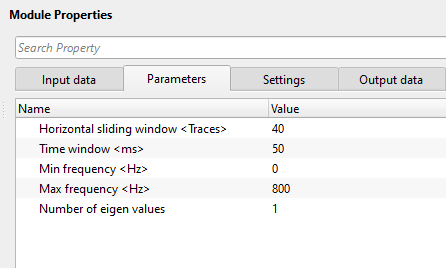
![]()
![]()
Auto-connection - By default, TRUE(Checked).It will automatically connects to the next module. To avoid auto-connect, the user should uncheck this option.
Bad data values option { Fix, Notify, Continue } - Bad value fix - This is applicable whenever there is a bad value or NaN (Not a Number) in the data. By default, Notify. While testing, it is good to opt as Notify option. Once we understand the root cause of it, the user can either choose the option Fix or Continue. In this way, the job won't stop/fail during the production.
Notify - It will notify the issue if there are any bad values or NaN. This is halt the workflow execution.
Fix - It will fix the bad values and continue executing the workflow.
Continue - This option will continue the execution of the workflow however if there are any bad values or NaN, it won't fix it.
Calculate difference - This option creates the difference display gather between input and output gathers. By default Unchecked. To create a difference, check the option.
Number of threads - One less than total no of nodes/threads to execute a job in multi-thread mode. Limit number of threads on main machine.
Skip - By default, FALSE(Unchecked). This option helps to bypass the module from the workflow.
![]()
![]()
Output DataItem
Output gather - generates random noise attenuated output gather.
Gather of difference - generates the difference gather before and after random noise attenuation.
There is no information for this module so the user can ignore it.
![]()
![]()
In this example workflow, apply RNA (Random Noise Attenuation) module on a post stack section.
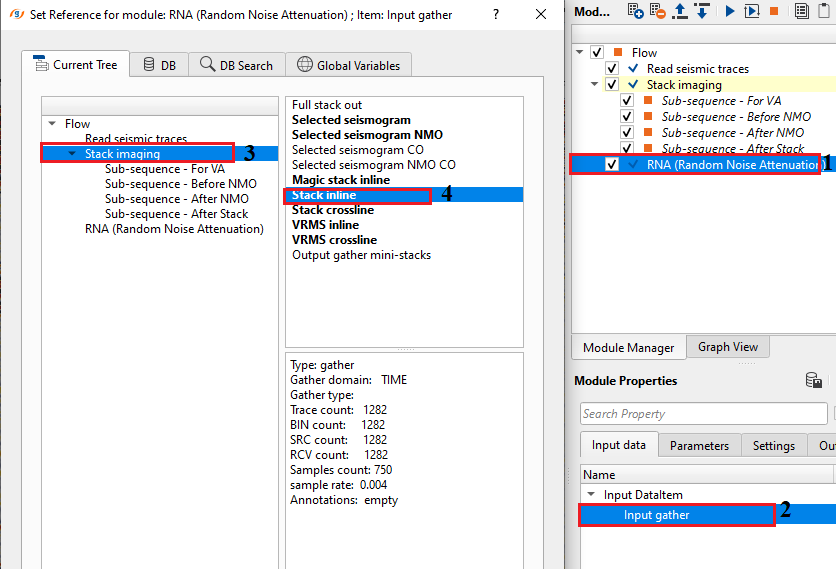
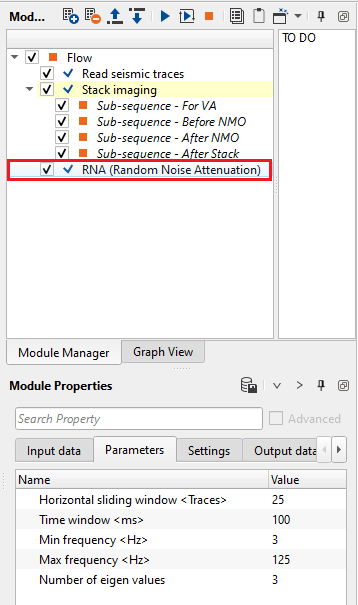
Test the parameters with different combinations to make sure that there is no primary leakage by looking at the difference gather display. Execute the module and generate the vista items. It has 3 items, input gather, output gather & difference.
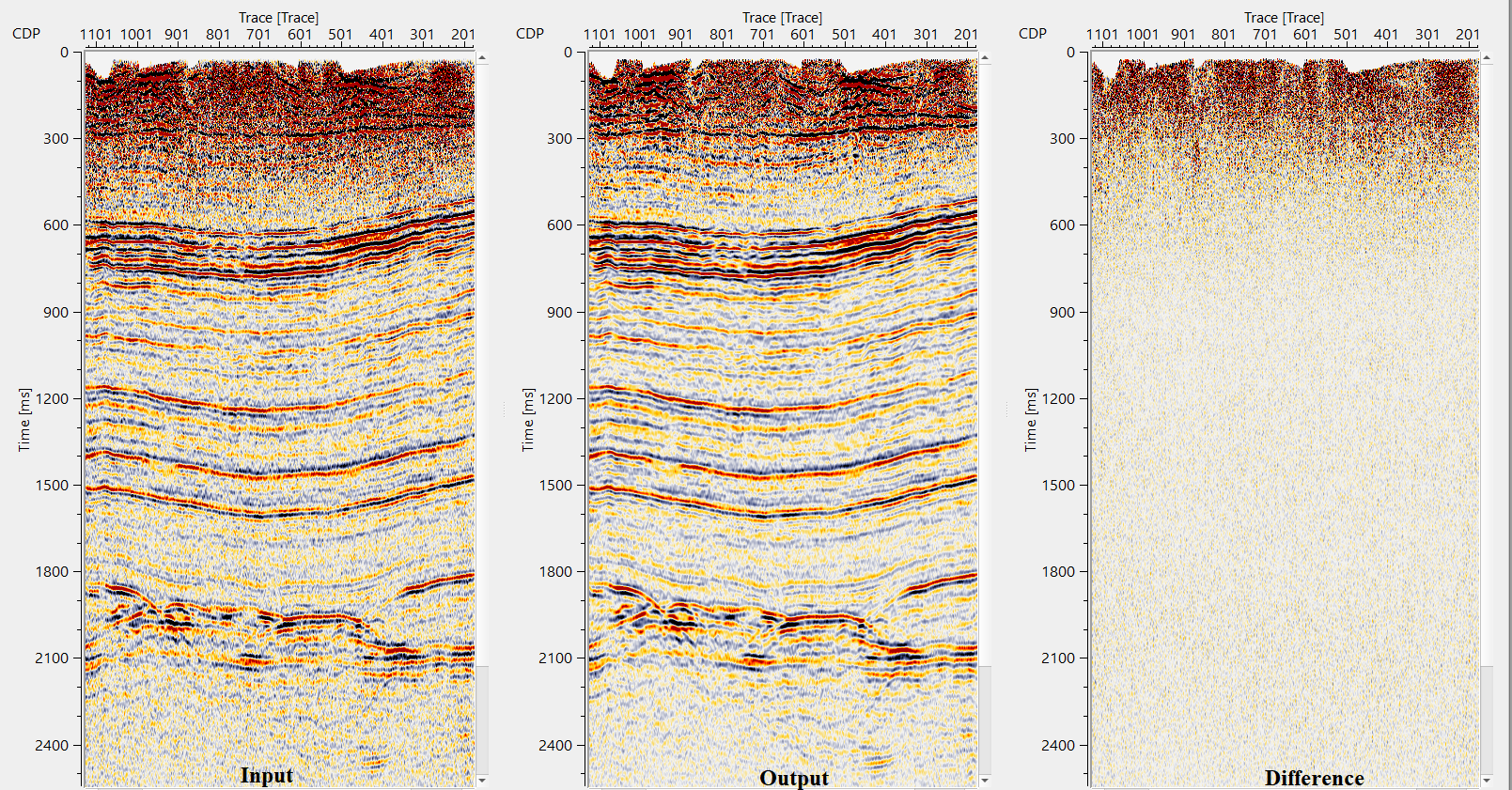
![]()
![]()
There are no action items available for this module so the user can ignore it.
![]()
![]()
YouTube video lesson, click here to open [VIDEO IN PROCESS...]
![]()
![]()
Yilmaz. O., 1987, Seismic data processing: Society of Exploration Geophysicist
 * * * If you have any questions, please send an e-mail to: support@geomage.com * * *
* * * If you have any questions, please send an e-mail to: support@geomage.com * * *
![]()
Parameters
Horizontal sliding window
Provide number of input traces for filter prediction
Time window
Provide the time window
Min frequency
Provide the minimum frequency value
Max frequency
Provide the maximum frequency value
Number of eigen values
The lesser the number the harsher the reduction of noise